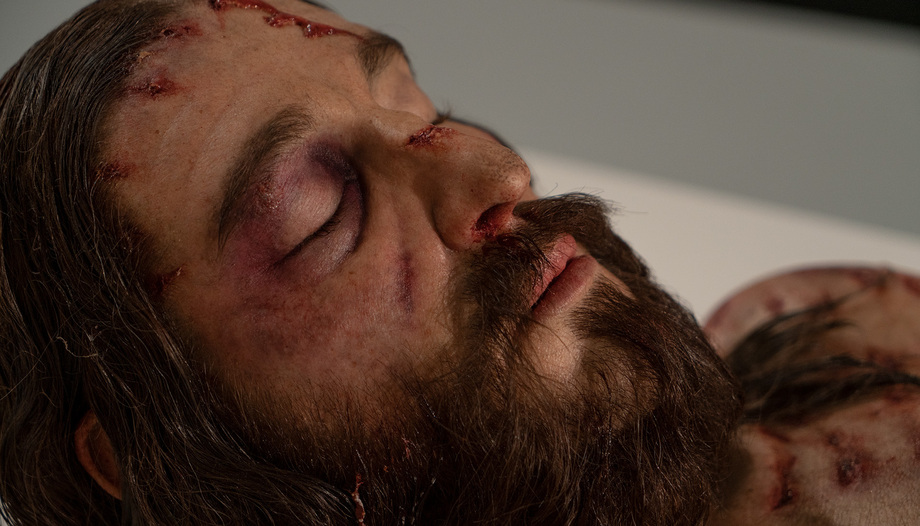On the Cross, Jesus carried out the greatest act of love ever performed by a human being and, to talk about love, it is always a good time, don't you think?
The month of May offers us various opportunities to reflect on God's great love for us, which he manifested on the Cross.
La Cruz
On the one hand, the May crosses, a manifestation of popular religiosity that has a deep tradition and is still very popular both in Spain and in Latin America. Crosses decorated with flowers in every street or square offer this double aspect of the cross, as a place of death and life, of pain and joy, of darkness and light and color. The origin of this festivity is to be found in the celebration, on May 3, of the Feast of the Invention (discovery) of the Holy Cross.
On this day, the discovery of the true cross of Christ is commemorated, along with two others, in the excavations conducted by St. Helena, mother of Emperor Constantine, in Jerusalem. A cross that these days has returned to the limelight since the Holy See has donated two small fragments of it, as an ecumenical gesture on the occasion of the centenary of the Anglican Church of Wales. These relics of the so-called Lignum Cruciswill be incorporated into the cross that will preside this week over the celebration of the consecration of Charles III as the new king of England.
Jubilee Holy Year
Likewise, during this Easter season, the Jubilee Holy Year was opened in Liébana, whose monastery of Santo Toribio has been a place of pilgrimage over the centuries precisely because it is the custodian of nothing more nor less than the fragment of the Lignum Crucis largest in the world.
Until April 16, 2024, we have the opportunity to join the thousands of pilgrims who will come to win the Jubilee in this special year, venerating this relic that speaks to us of loving to the point of giving life, of giving life by loving.
The Mystery Man
Finally, until June 30, the Cathedral of Guadix, in the province of Granada, hosts the exhibition ".The Mystery Man"The exhibition offers once again a unique opportunity to reflect on this duality of death and life through a unique approach to the figure of the executed man whose image appears on the Shroud of Turin.
Whether or not Jesus is that "mysterious man" of the shroud, the truth is that the exhibition is designed to bring us closer to the central mysteries of our faith: the Passion, Death and Resurrection of Jesus. I had the opportunity to visit it recently and, after an introduction in which the visitor is immersed in the way in which Rome executed those condemned to the penalty of the cross, I was able to learn through detailed panels and audio guides, the history of the shroud, its influence on Christian iconography of all times, and the great unknowns of an image whose formation science has not yet been able to explain.
The highlight of the visit comes when you can see up close a hyper-realistic sculpture, with hair and marks, of the man in the Holy Shroud, being able to contemplate every wound, every sore, every bloodstain. My sensation, as a spectator, was very different from that felt before the multiple and beautiful devotional images that are venerated in our churches and chapels with titles such as Santísimo Cristo de... or Nuestro Padre Jesús de....
Knowing how to recognize
The fact of not naming this mysterious man, whose signs of martyrdom coincide fully with those reported in the Gospels, made me get much closer to the humanity of Jesus and ask myself: Would I have recognized God in Jesus if I had met him face to face in life or would he have seemed to me "one of many", as St. Paul says in his famous hymn in the Letter to the Philippians? And with the question, a denunciation: why am I not able to see God and feel the devotion deserved by the flesh and blood Christs in whom He assured that He would become incarnate when He said: "I was hungry and you gave me to eat, I was thirsty and you gave me to drink..."?
In a message on the occasion of the ostension of the Shroud in 2013, Pope Francis emphasized this idea, affirming that "this disfigured face resembles so many faces of men and women wounded by a life that does not respect their dignity, by wars and violence that afflict the most vulnerable... However, the face of the Shroud conveys a great peace; this tortured body expresses a sovereign majesty. It is as if it lets a condensed but powerful energy shine through; it is as if it were saying to us: have confidence, do not lose hope; the power of God's love, the power of the Risen One, conquers all".
It is with this hope that I want to remain in this month of May of Death and Resurrection. Because the Cross was worth it.
Journalist. Graduate in Communication Sciences and Bachelor in Religious Sciences. He works in the Diocesan Delegation of Media in Malaga. His numerous "threads" on Twitter about faith and daily life have a great popularity.








